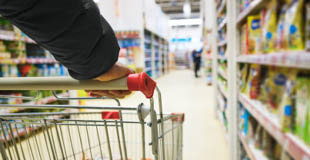Subsidiaries of Bed Bath & Beyond
- buybuy BABY
- Christmas Tree Shops
Key Findings
- Bed Bath & Beyond (including subsidiary buybuy BABY) continues on a longstanding path of restricting harmful chemicals, though its efforts have been slower than some of its direct competitors. The company has a safer chemicals policy that includes a broad beyond restricted substance list (BRSL), restrictions on specific flame retardants, a Priority Chemicals List that restricts harmful chemicals in personal care, cosmetic, and cleaning products, and a manufacturing restricted substance list (MRSL).
- In 2019, Bed Bath & Beyond initiated its Priority Chemicals List and committed to eliminate chemicals on that list in its private-label baby personal care products by the end of 2020. The CEO confirmed that this effort was on track during the company’s annual shareholder meeting, and this was reaffirmed by staff in late 2020.
Recommendations for Bed Bath & Beyond
- As Bed Bath & Beyond reshapes its business, it has the opportunity to fully embed its safer chemicals policy into its core mission. The company should craft such a plan at the highest level of decision-making. The company should become a signatory to the Chemical Footprint Project and pilot it with key private-label suppliers.
- We urge the company to eliminate and safely replace any per- and polyfluoroalkyl substances (PFAS), toxic flame retardants, and phthalates that may be in the products it sells. The company should also eliminate plastics of environmental health concern (PEHCs) from both its product and packaging materials. BBBY should publicly disclose the alternatives used to replace the chemicals of high concern (CHCs) or PEHCs after eliminating them.
- The company should set concrete goals and report on its progress. Collaborating with other retailers and manufacturers to identify safer alternatives could significantly advance its progress. It should prioritize products that are certified by robust third-party standards like GOTS (Global Organic Textile Standard) and MADE SAFE to document safer materials and to demonstrate to shoppers the quality of the products.
Grade History
How does Bed Bath & Beyond compare to its competitors?
Analysis of Bed Bath & Beyond
Oversight: Established management responsibilities and incentives
Disclosure: Requires suppliers to report use of chemicals in products to retailer
Action: Reduced or eliminated chemicals of high concern (CHCs) or plastics of environmental health concern (PEHCs) within the last three years
Safer Alternatives: Evaluates safer alternatives, avoids regrettable substitutes
Transparency: Demonstrates a commitment to transparency and public disclosure
Third-party Standards: Promotes credible third-party standards for safer products
Extra Credit:
Joint Announcement: Public commitment demonstrated through joint announcement
Continuous Improvement: Shows continuous improvement by steadily expanding safer chemicals policy
Collaboration: Actively participates in collaborative process to promote safer chemicals
Impact Investment: Investing financial resources into independent research into safer alternatives and/or green chemistry solutions



